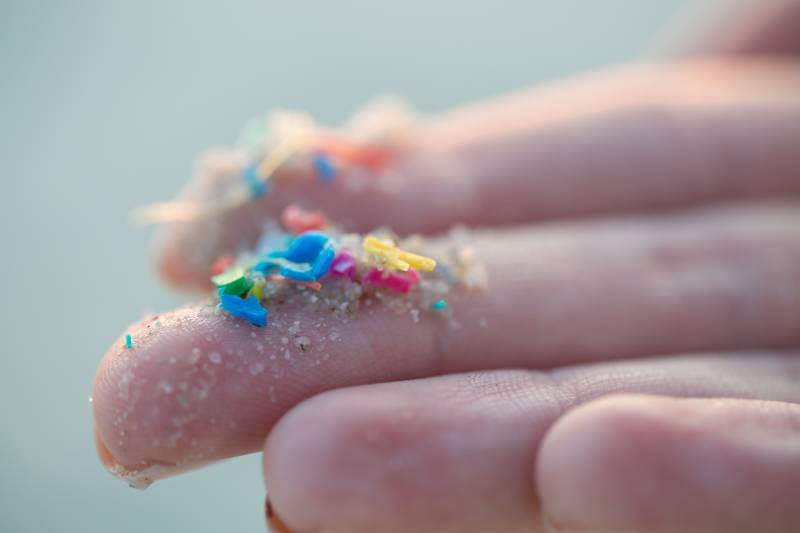“One of the first places as far as microplastic pollution is concerned is indoor environments. There have been a number of studies that have quantified just how much of this stuff is in the air, and that's coming in large part from the clothes that we're wearing,” Simon said, noting that some plastic fibers inevitably flake off and fall on the ground as they degrade over time. “Some two-thirds of clothing is now made out of synthetic fibers. That's plastic.”
Simon added that, compared to adults, infants and toddlers likely have a higher concentration of microplastics in their bodies.
“This is largely due to plastic bottles for formula,” he said. “If you are preparing infant formula in a plastic bottle, there's a calculation that something on the order of a million particles are coming off per day. And that's ingested per baby.” He also cautioned against freezing or microwaving plastic containers, and suggested using glass products whenever possible.
Given the dearth of research and data on the issue, Simon said, it will likely take as long as another decade to find clear evidence of impacts to human health. But early studies don’t look promising, he added, particularly because many plastics contain endocrine-disrupting chemicals like bisphenol A (BPA).
A major part of the problem, Simon said, is a lack of information about the specific chemicals that make up various types of plastics. “The industry won’t tell us. They don't put an ingredient list on their products," he said, leaving researchers to try to reverse-engineer them to figure out what they're made of.
“What we know from the studies is that the dust inside people's homes is likely to be the greatest exposure for microplastics. We're just breathing it in,” said Scott Coffin, research scientist at the California State Water Resources Control Board. He recommended buying a good air filter to reduce the amount of contaminated dust indoors, and trying to get rid of as much plastic fiber as possible.
Coffin's agency is the first in the country to create a road map for monitoring microplastics in many of California's major drinking water sources, and to establish a preliminary health-based threshold and testing methods.
“It will be the world’s first health-based guidance value of any sort for microplastics formally recommended by a working group or government agency,” Coffin told CalMatters in 2021, at the onset of the project. “This will carry a lot of authority, even if it is just a preliminary guidance level.”
By next year, he said, consumers in large water districts across the state, including those serving San Francisco and the East Bay, could start receiving notifications about the level of microplastics in their pretreated water sources, including supplies in Hetch Hetchy reservoir and other major Sierra Nevada reservoirs feeding the Bay Area.
The state Water Resources Control Board also posted a report last month detailing the potential effects of microplastics on the health of the San Francisco Bay.
“Our tentative conclusion at this point is that we have enough evidence to suggest that there is potential harm to the ecosystem,” Coffin said.

